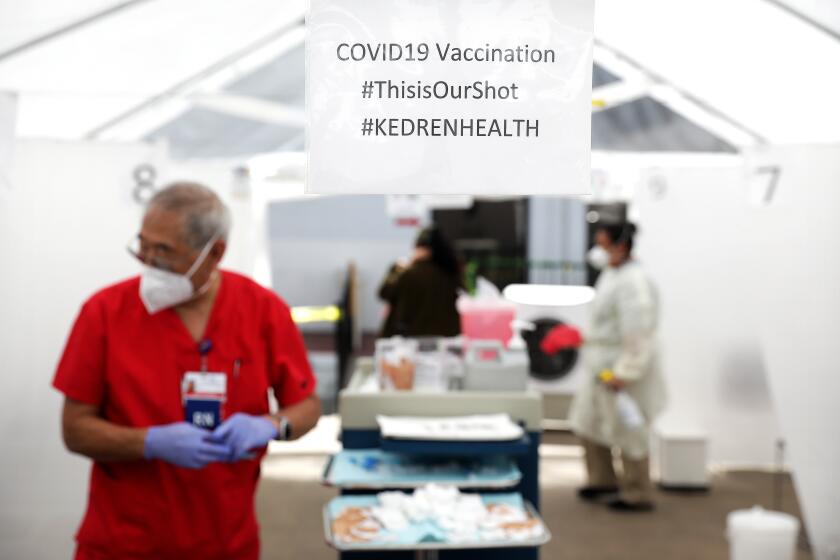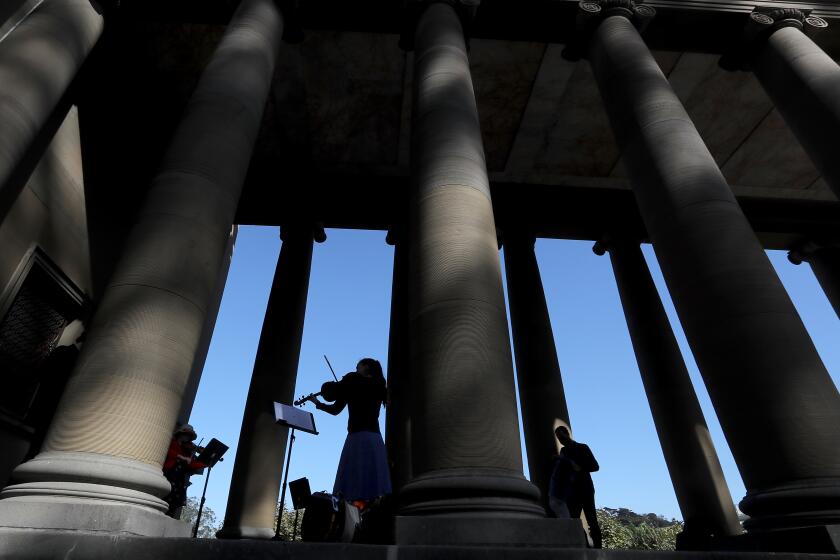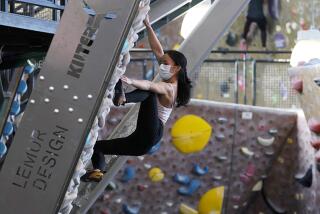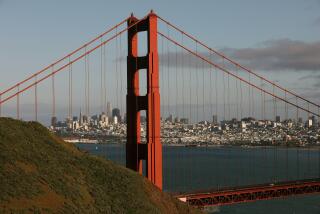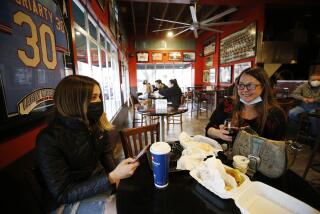San Francisco celebrates move to higher reopening tier, but at least one expert is wary
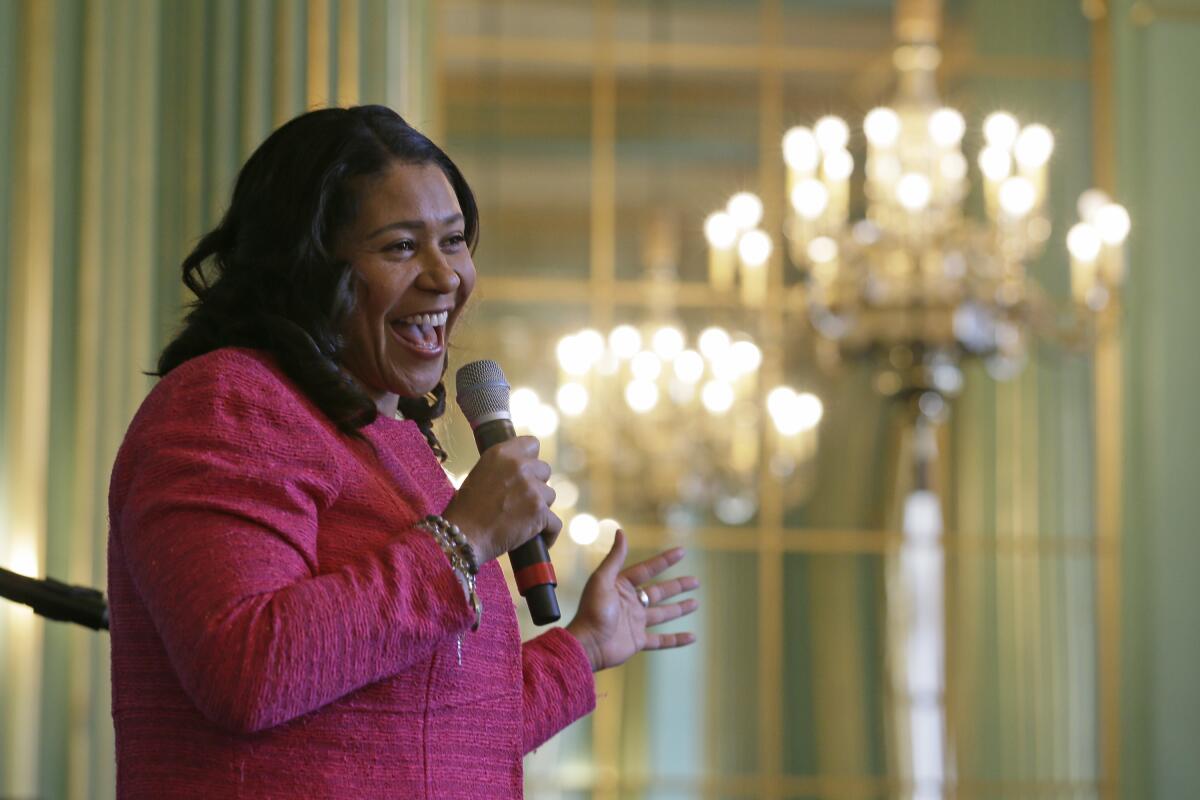
SAN FRANCISCO â Known for their cautious approach throughout the COVID-19 pandemic, San Francisco leaders are cheering progress that allowed the city on Tuesday to move into Californiaâs third of four tiers for reopening.
San Francisco, Marin and Santa Clara counties have joined San Mateo County in the stateâs orange tier, representing moderate risk of the virus. The advancement means businesses can serve more people indoors, bowling alleys can reopen, breweries and bars can offer drinks outdoors and movie theaters can start selling popcorn again.
âSan Francisco is going to come alive,â declared Mayor London Breed, who appeared at a news conference Tuesday in an orange dress to signify the cityâs new status. She was joined by business leaders in hailing the new relaxed requirements.
Even San Francisco Public Health Director Dr. Grant Colfax, known for giving gloomy assessments during the pandemic, was upbeat.
âWe are close to the finish line,â he said.
San Francisco is ahead of Los Angeles and Orange counties in advancing to the less-restrictive orange tier, but both those counties are hopeful they will achieve that designation next week.
âItâs certainly good news that weâre making progress, reducing transmission across the county,â Los Angeles County Public Health Director Barbara Ferrer said Tuesday. âHowever, we continue to remain concerned about the potential risks that can thwart our progress.â
Some experts continue to warn of another possible wave of coronavirus cases in late April, fueled by a highly infectious variant first detected in the United Kingdom. Vaccine availability is also a wild card.
In the Bay Area, two counties, Contra Costa and Solano, have expanded eligibility to people ages 50 and older, though Solano is facing a vaccine shortage.
Even as the stateâs numbers remain comparatively positive, officials are urging caution, saying California can ill afford to see its progress reverse.
Dr. John Swartzberg, a UC Berkeley infectious disease expert, expressed dismay at the optimism of San Francisco officials.
âWhat is worrying me is that we are starting to open up quite quickly again with the storm still on the horizon,â he said in an interview after the news conference.
Swartzberg gave the odds of another âswellâ of cases in California in late April at 60%. He noted that infections already have started to plateau in the state and are rising in other parts of the country. The U.K. variant may be the dominant strain of the virus in California as early as the end of the month, he said.
California âshould be moving in baby steps and not big steps,â he said, adding that many people misconstrue what a finish line will look like.
âIt will not mean we are COVID-free,â he said. âCOVID is going to be background noise, just like influenza, and we are going to learn to live with it. We will be dealing with COVID for the indeterminate future.â
Over the last year, public health experts have praised San Francisco and the Bay Area for being more cautious than the state allowed. The region saw a surge in COVID-19 cases over the winter, but not to the degree that L.A. County was hit with coronavirus hospitalizations and deaths.
At the news conference, both Breed and Colfax tempered their cheer with advice that residents continue to wear masks, maintain distance, wash their hands often and get vaccinated when allowed.
âWe need to double down on all our safety measures,â Colfax said.
Breed said nearly 40% of San Franciscans age 16 and older have been vaccinated, and nearly 80% of those 65 and older have received at least one dose.
Offices can now open at 25% capacity. Breed said she understood that some businesses would continue to allow employees to work remotely, but she hoped workers would âwant to return to work and be around other folks.â
âWorking at home is boring,â she said. âI want to be around people.â
Colfax noted that hospitalizations for COVID-19 are at their lowest point in more than four months, with just 35 patients on average daily in San Francisco. New infections are down to about 31 a day, compared with 374 during the winter surge, he said.
Colfax even suggested that the city might soon move into the least restrictive tier, yellow, allowing hotels, restaurants, fitness centers and other indoor establishments to more fully reopen.
âLetâs hope we are seeing the color yellow in just a few weeks,â Colfax said.
San Francisco shut down early in the pandemic and later limited reopening. Now the city is the first urban center in California where the risk of infection is rated as minimal.
Under the stateâs reopening strategy, counties are sorted into four color-coded tiers; purple, in which coronavirus transmission is considered widespread and indoor operations are severely limited or outright suspended across a wide array of business sectors; red, with fewer restrictions; orange, with even fewer; and finally, yellow, in which most businesses can open indoors with modifications.
Tier assignments hinge on three factors: coronavirus case rates, adjusted based on the number of tests performed; the rate of positive test results; and a health equity metric intended to ensure that the positive test rate in poorer communities is not significantly higher than a countyâs overall figure.
While California has made tremendous progress following a COVID-19 surge in the fall and winter, the orange and yellow tiers remain a fairly exclusive club.
According to state data released Tuesday, three other counties â Trinity, Lassen and Yolo â will join San Francisco, Santa Clara and Marin in moving into the orange tier this week. Already in that tier are Mariposa, Plumas and San Mateo counties. Just two counties, Alpine and Sierra, have made it to yellow.
San Francisco officials said they intend to allow outdoor arts, theater and musical performances for audiences of up to 50 people staring April 1 and noted that they were developing guidelines for bringing back outdoor spectators and large outdoor entertainment venues. Those sites may also reopen in April, with approved health and safety plans, assigned seating and capacity restrictions.
Most indoor businesses will be allowed to operate at 50% capacity, with some exceptions. Indoor dining will be expanded to 50% capacity or 200 patrons, and indoor gyms will be expanded to 25% capacity or 100 patrons. Group fitness classes may also resume at 25% capacity or 100 people, whichever is fewer.
Indoor museums, zoos and aquariums with an approved safety plan may expand to 50% customer capacity. Attendance at indoor houses of worship and funerals may rise to 50% capacity, with singing and chanting permitting by masked congregations. Indoor movie theaters may also expand to 50% capacity, up to 200 people.
Child care and pre-kindergarten programs may expand from 16 participants of stable groups to the number allowed by licensing requirements.
More to Read
Sign up for Essential California
The most important California stories and recommendations in your inbox every morning.
You may occasionally receive promotional content from the Los Angeles Times.
